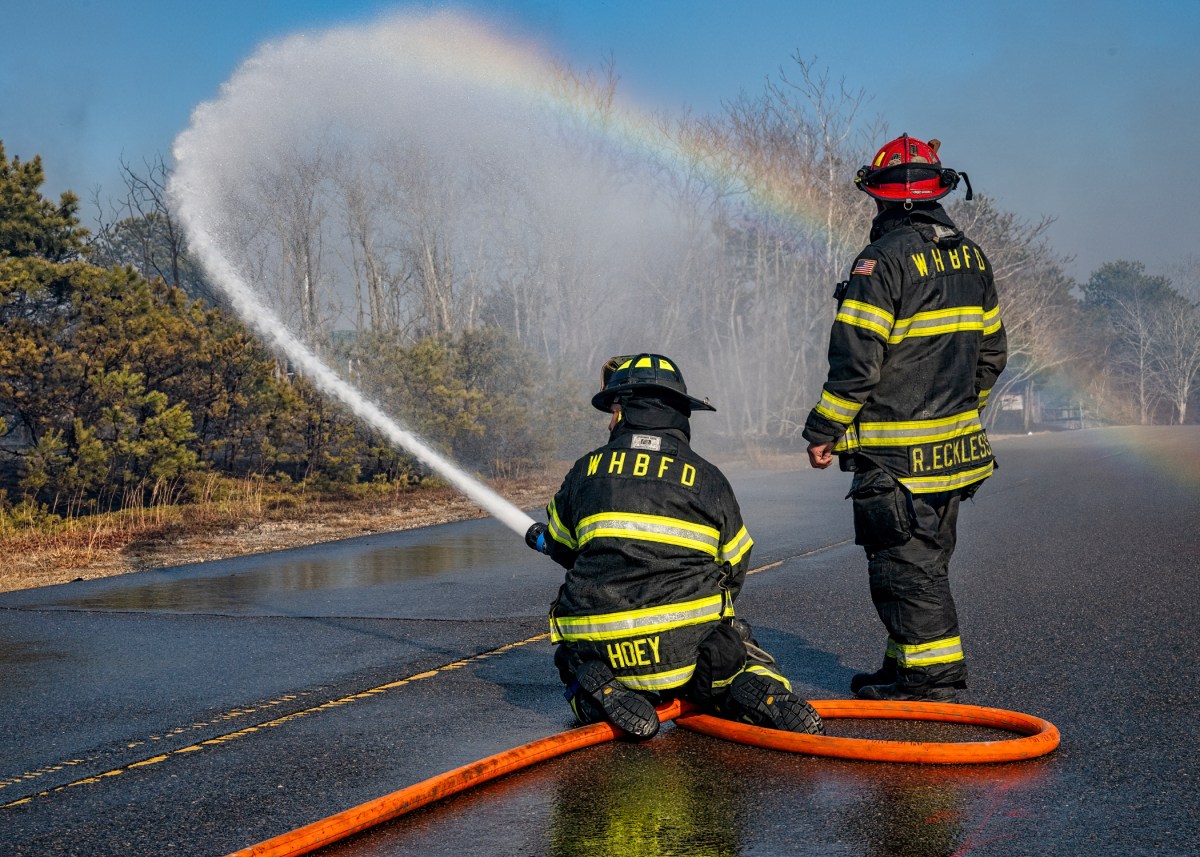Hats Off to Perelman: Billionaire Gives More Than Zoning Board Asks For

This article is intended as a tip of the hat to billionaire Ron Perelman. He has this past week done something extraordinary in a zoning situation concerning his 57-acre property on Georgica Pond in East Hampton Village. He has given the Zoning Board of Appeals more than they have asked for.
Publishing Dan’s Papers for 58 years in the Hamptons, I have often observed situations where wealthy individuals have claimed their “patch” here, then proceeded to violate many zoning laws in the belief that their high-powered lawyers will make everything all right. Indeed, sometimes these lawyers find a comma in an old deed wrongly written that brings a zoning law down, which proves their worth as legal eagles to the Masters of the Universe.
Ron Perelman is one of the two or three richest men in the Hamptons. About 25 years ago, he bought this enormous, wooded estate with more than a mile of waterfront at the head of Georgica Pond for himself and his family. On it was a grand Mediterranean villa originally built in 1899 for painter Albert Herter.
In this woods, Herter was famous for holding grand formal parties that often involved sporting events and entertainments for his friends and families. One such entertainment was called a “tableau,” an afternoon or evening when all the members of society attending the day at his home would dress up in costumes to assume a great group pose, duplicating a famous play or painting from antiquity.
It would then be photographed for posterity. Other entertainments were simply performances. Isadora Duncan, Enrico Caruso and Anna Pavlova were among the guests who performed there.
In 1952, a descendent of Herter’s, Christian Herter—the Secretary of State during the Eisenhower Administration—sold the property to Alfonso Ossorio, a wealthy Filipino-American artist who, with his longtime companion Ted Dragon, continued the sort of festivities held by the Herter family in the eras before. Among other things, at a dock on the pond, Ossorio parked several gondolas he’d bought in Venice on one of his many foreign trips. They were for the use of his guests.
I was fortunate enough to be invited onto the property during the time that Ossorio owned it. I’d met him when he came to give opinions to an art committee I chaired for the Town of East Hampton. To get to the villa, I drove into the property, past more than 100 of Ossorio’s brightly painted sculptures, placed at numerous locations where driveways running through the estate made turns or dead ends. In the main house, Ossorio showed me his paintings.
The Smithsonian has some of his work. I still remember this visit, and several others I took. It is fair to say that with its numerous buildings and structures, it resembles a little village all its own. Certainly it is very separate from everything that is around it.
When Herter owned the property, and for the first eight years Ossorio owned it, it was legal to build whatever you wanted because zoning had not yet been introduced in the village. And so I think it could be possible for the master of this domain, even today, to be seduced into thinking he could really do what he wanted here—within reason, anyway. Certainly nobody bothered Ossorio about any of it. And I think that the Village really didn’t want to go on that property to make a problem out of anything. Why should they? The place was beautiful and tastefully done. And much of what was there was built before zoning.
Unfortunately, a few years ago, a small fire occurred at one of the buildings, and among those coming on the property to put it out was volunteer firemen Ken Collum, who that year also became village ordinance inspector. He subsequently issued about 17 zoning violations concerning what he saw on the property—including buildings too close to wetlands, barns that are now guesthouses, vegetation cleared from the land.
Perelman’s lawyers filed a request for variances for everything. The request was denied. They then appealed to the Zoning Board of Appeals.
Time went by, and last week the Zoning Board of Appeals announced that they had reached a remarkable agreement with Perelman about his estate, which they expected to jointly propose to the Town Board for approval.
The Zoning Board had asked that Perelman re-vegetate 70,000 square feet of indigenous foliage that had been cleared. He agreed to re-vegetate that land and then more, for a total of 133,656. He was asked to remove six bedrooms from what had once been a barn. He will make it a storage building. He’s going to remove fencing that encroaches onto wetlands. He then said he would install a nitrogen-reducing septic system for his entire property, completing the work within two years.
He has asked in return that he be permitted not to have to move a building that was originally built a few feet closer to wetlands than the law now allows, keep his synagogue at the size it is now rather than reducing it (it is considered an “outbuilding”) and allow one building which has a height of 15 feet to remain where it should not have been taller than 14 feet. He also can keep the two bathrooms in the synagogue (men and women), but will remove the shower.
One could say that Mr. Perelman has met the enemy and they have won, but I think he has, under the circumstances, done an extraordinary thing. More power to him. Though he doesn’t need any.
* * *
Also this past week, the results of a study done on the composition of the pollution that sometimes chokes Georgica Pond was released. (Yes, even the most exclusive pond in the Hamptons gets polluted.) The study took two years and was done by scientists at Stony Brook University at the request of Friends of Georgica Pond, a group of residents living along the pond.
I believe he results of this test have been widely misinterpreted. One publication headlined “Dogs Pollute Georgica Pond,” another had an editorial titled “Blame the Dogs” about how we need to take more mannerly care of our dogs. Still another paper ran with the headline “Canines are responsible for 67% of Fecal Bacteria…”
The reason for this is that dogs represent a more interesting part of the report than the rest of the report. The dogs are mentioned in a section about fecal matter found in the pond. They are not included in the rest of the report, which involves the pollution caused by non-fecal matter—which is usually about four-fold the amount of fecal matter in pollution samples, according to East Hampton environmentalist Larry Penny. For instance, you often see algae blooms clogging ponds, or red tide, a mix of non-fecal chemicals. Water runoff from roads with oil, trash and farm chemicals in it is a main suspect.
In the fecal material examined, the scientists determined the cause by taking DNA samples. They found that 3% of the fecal matter came from humans, 6% came from deer, 24% came from birds and 57% came from “dogs, cats and other small mammals.”
Apparently, reporters latched onto “3% humans, and the 57% dogs…” sort of forgetting that what came after in that category could include cats, raccoons, fox, beavers, moles, porcupines, skunks and so forth and so on.
Also not featured was the study result indicating that human fecal matter was not a big cause of Georgica Pond pollution. (This might have been the hope of the Friends of Georgica Pond, which bankrolled the study.) Truth is, the big estates each sit on grand acreage and are few and far between, so although human fecal matter pollutes ponds surrounded by many smaller homes, it doesn’t do that here.



